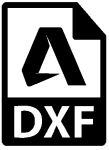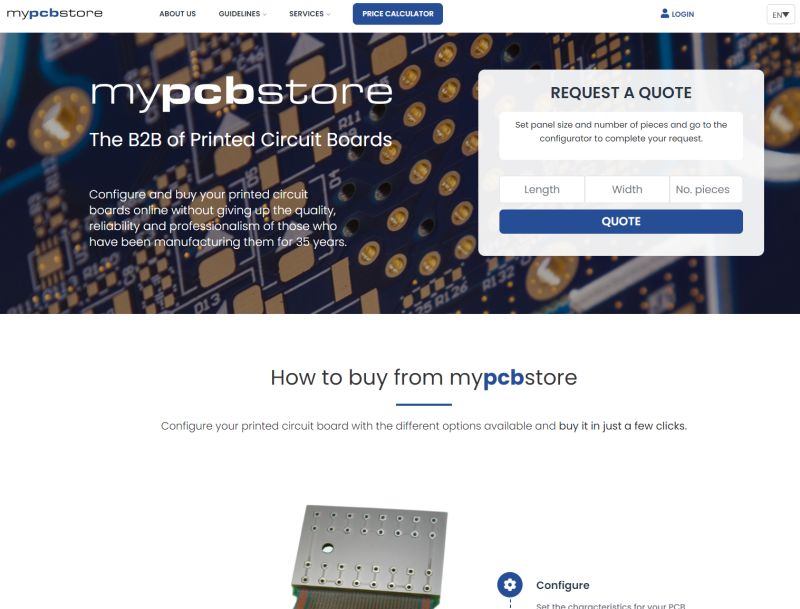In the production of printed circuit boards (PCBs), various data formats are used to transfer the PCBauch: gedruckte Schaltung, engl.: PCB – Printed circuit boar… More design and manufacturing information. The most common data formats for the production of PCBs are:
- ODB++
ODB++ (OpenDataBase), developed by GenCAM, is a comprehensive data format that contains not only information about the PCBauch: gedruckte Schaltung, engl.: PCB – Printed circuit boar… More layout, but also about the Bill of Materials (BOM) and other manufacturing information.
More information on the ODB website: https://odbplusplus.com/ - Gerber-Files (.GBR)
Gerber files are the most widely used format for the production of PCBs. They contain information about conductor tracks, solder pads, solder resist and screen printing. As a rule, several separate Gerber files are created for different PCBauch: gedruckte Schaltung, engl.: PCB – Printed circuit boar… More layers and components.
The Gerber format was developed by Gerber Systems.
More information on the Ucamco website: https://www.ucamco.com/en/gerber
- Gerber RS-274D
Standard Gerber of the first generation. A separate aperture file is required. Standard gerber can sometimes not be read by the PCBauch: gedruckte Schaltung, engl.: PCB – Printed circuit boar… More manufacturer’s software at all or only with increased effort
The format was officially discontinued in 2014 and may no longer be used - Gerber RS-274X / Gerber X2
Extended Gerber with integrated aperture information - Gerber X3
The final version of the Gerber X3 specification has been published by Ucamco and now includes component information in the Gerber data. With this new version, it is possible to visualize component placements to check for errors and set up the assembly, manufacturing tools such as paste templates and pick-and-place machine programs can be created.
- Gerber RS-274D
-
IPC-2581
IPC-2581 is a standardized, open data format that stores PCBauch: gedruckte Schaltung, engl.: PCB – Printed circuit boar… More design information in a single XML-based format. It contains information about the PCBauch: gedruckte Schaltung, engl.: PCB – Printed circuit boar… More layout, drill holes, materials and much more. IPC-2581 is designed to facilitate data transfer between different CAD and manufacturing systems.
More information on IPC-2581 can be found on the IPC Consortium website: https://www.ipc2581.com/ -
DXF (Drawing Exchange Format)
DXF is a file format developed by AutoCAD and is sometimes used for the transfer of PCBauch: gedruckte Schaltung, engl.: PCB – Printed circuit boar… More layout drawings. However, it is less common than Gerber and ODB++. -
IDF (Intermediate Data Format)
IDF is a format used for the transfer of 3D PCBauch: gedruckte Schaltung, engl.: PCB – Printed circuit boar… More design information between CAD systems and mechanical design tools. It contains information about the position and alignment of components on the PCB. -
ASCII files
In addition to the specialized formats mentioned above, ASCII files can be used in various forms to transfer additional information, such as parts lists, assembly instructions or customer-specific requirements.
Additionally for drilling programs:
- Excellon
(type 1 or 2) preferably with integrated tool information
Excellon files contain information about the position and size of holes and vias on the PCBauch: gedruckte Schaltung, engl.: PCB – Printed circuit boar… More. They are used together with the Gerber files to ensure that the holes are placed in the correct positions.
The use of one of these formats enables smooth import and correct recognition in the usual systems. Please note that not all native CAD formats are supported.






Further recommendations
Pack data as a ZIP
The generated data should be packed into a compressed file in .zip or .rar format. Please note the following:
- Only one version of your project should be included
- It should not have a directory structure
- It should have a unique and meaningful name that refers to your project
- Only the files required for production should be included
What data is required
To ensure a smooth import and correct order processing within the specified time frame, please provide ONLY the files required to manufacture the PCBauch: gedruckte Schaltung, engl.: PCB – Printed circuit boar… More, including:
- Copper layers
- Solder resist layers
- Legendprint
- Drilling files
- Outline contour
If required:
- Additional mechanical information
- Solder paste information
- Additional prints such as carbon, peelable mask
If additional explanatory files are required, these should be in ASCII format or a common format such as PDF or DOC.
Verifying the Gerber data
We recommend verifying the result of the Gerber generation process with one of the numerous Gerber file viewers, some of which are free of charge.




